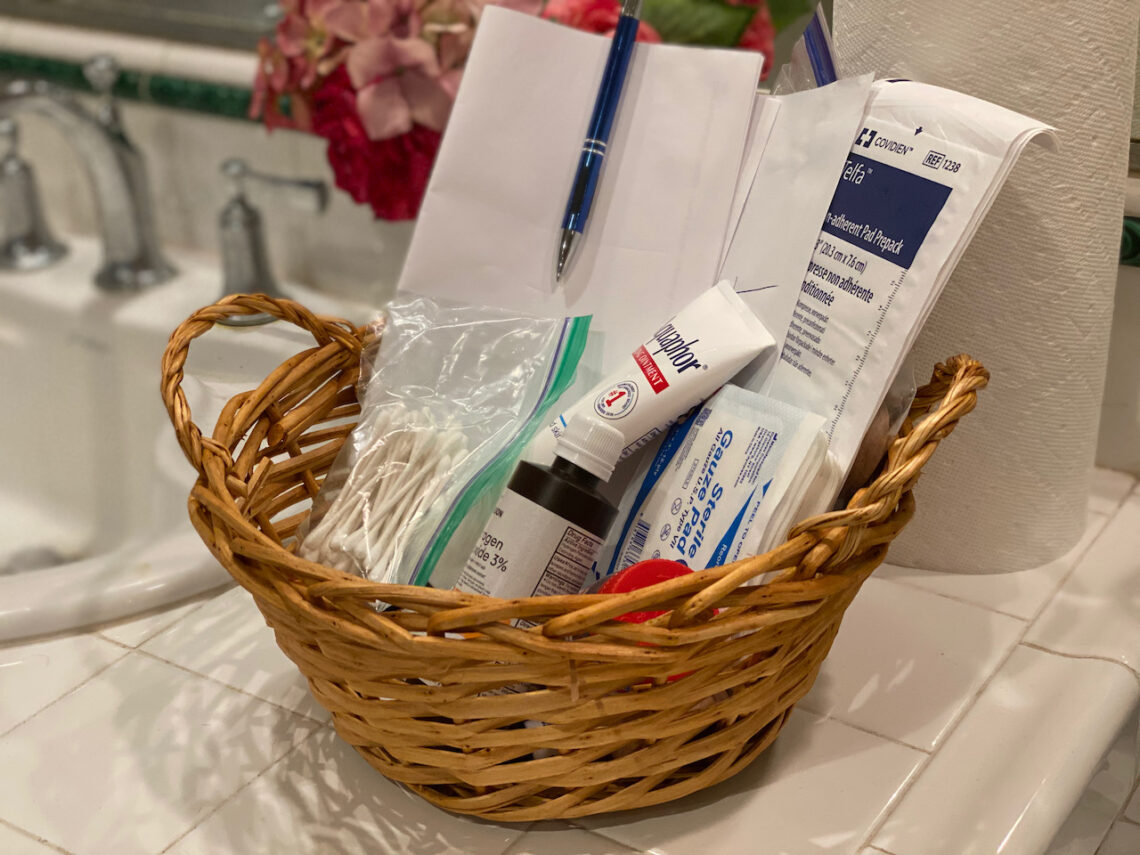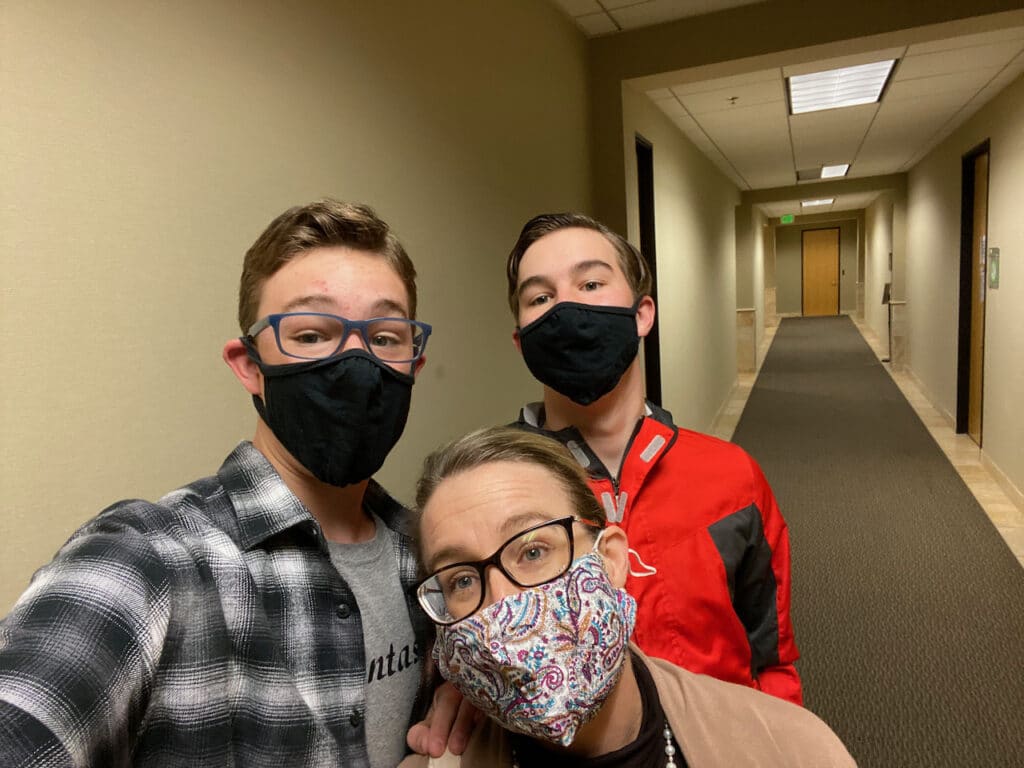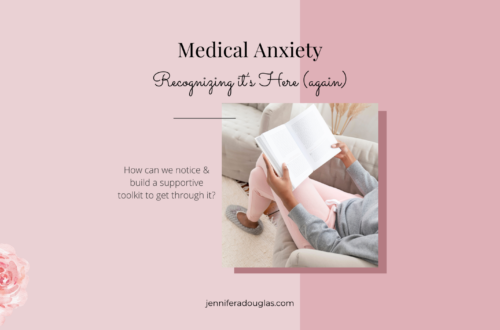
Caregiving Tips: Create a Recovery Basket
A recovery basket is a centralized place to keep all of the necessary supplies and medications needed during the recovery period. It is a place to keep the notes from the doctor and keep track of medicine dosing. The recovery basket is easy to move around and also keeps needed supplies in one location.
This past December, both of my sons had their wisdom teeth removed on the same day. Yes, I scheduled that on purpose! My eldest son, Ken, should have had his removed in the summer of 2020, but with Covid, it got delayed. During that delay, Dan began to have some pain in his wisdom teeth. Both of them needed surgery.

I decided to schedule the surgeries back to back. I figured they could recover together, and I could blend both of their meals for a while.
It was a bit overwhelming at first, especially when they first got home. There was ice, gauze, medications, and a whole lot of pain happening! They each got sent home with a care package and instructions that I would need to follow. There were antibiotics, pain meds, and steroids to manage. I needed a way to keep track of everything.
I dumped it all out on the counter and realized that I needed some way to contain it. I looked through my kitchen and realized that I had a basket that could hold all of the supplies.
I had many “Nurse Mom” duties ahead of me, and I wanted to make sure that I kept good records.
Recovery Basket

What to Use?
You can use a basket, bowl, container, or even a tray. I tried a few things out before settling on the basket, which would work best for me. I planned on keeping the basket on my kitchen island, so I wanted it to be tall enough to hide most of the supplies. Still, I needed it to be open so that I could easily access it. I decided on a basket that was about six inches high. It had handles and was big enough to contain all of the supplies and paperwork I needed.
Easily Movable
One thing I liked about the recovery basket was that it was easily movable. If I needed to carry my supplies into the bathroom to help someone out, I just picked it up and moved it. Easy mobility is also essential if you need to keep the medications out of reach of children. It is easier to move one basket with medicine up high on a shelf rather than each item.
Appearance
I liked that the basket allowed me to have the area look put together. The kitchen island is in the center of our living space, and I didn’t want to have everything scattered and cluttering up my kitchen.
What goes in the Recovery Basket?
Instructions from the Doctor: After a medical procedure or surgery, it is quite common to receive a packet of instructions. I make sure that these instructions are put in the basket. When my kids were recovering from their wisdom teeth surgery, we needed to refer to these instructions quite frequently. If either one of them had a question about the order of their rinsing procedure, they could go right to the sheet of instructions and read it themselves. It was also helpful to have these handy so that we could call the doctor with any questions.
Doctor’s Contact Information: These are usually printed out on the instructions sheet. If the contact information isn’t there, I recommend putting the doctors’ phone numbers and names on a sheet of paper in the basket. That way, the caregiver or patient is equipped with the phone number and name of the doctor. When an urgent medical question arises, it is easier to have that number available. I needed to call my radiologist after my biopsies to discuss some healing issues. It was handy to have that information printed out and in a centralized location.
Cleaning/ Care Supplies: In the case of a surgery or injury, it is common to need specific supplies to care for the area properly. Sometimes these supplies are sent home with the patient in a post-op care bag. Put these items, along with anything else you might need for wound care, in that basket. If these items need to stay clean, you could consider placing them in a zip-top bag. I needed to store cotton swabs in one of my recovery baskets, but I didn’t want them lying on the basket getting dirty. That wouldn’t help keep the wound clean. So, I put them in a zip-top bag ( not sterile- I know) so that they would stay enclosed in the basket.
Medications: I made sure to put any prescription or OTC medications in the basket. This kept them centralized so that I didn’t need to hunt around the house for the medicine. If you have children in the home, it will be essential to keep these in a safe place. Since my teens are older and it is common for us to have the medication in a centralized location, I felt good about putting the prescriptions in the basket. But do what is safest for your home.
Notepad and Pen: When both boys were recovering from their wisdom teeth surgery, I needed to make sure that they got the right medication at the right time. Since I have one son who is allergic to ibuprofen and couldn’t take it, that meant I was keeping track of two different dosage schedules for OTC pain relief.
They also had antibiotics and steroids to manage. I was not going to remember all of the dosages and times. So, I had a page for each day. I kept notes of medications given and times. This helped me ensure each person got the right medication at the right time. IT also helped me manage the taper off of the prescription pain pills.
When the recovery period is completed, I retire the basket and put all supplies back in their original homes.
Having a recovery basket available and in a centralized location will help make caregiving easier in the days following a medical procedure. It helps me stay organized and relaxed because I know where everything is. Keeping records on paper means that I don’t need to rely on my memory with medication dosing. I highly recommend you create a recovery basket the next time someone in your home needs a little extra care.
Jennifer Douglas
Jennifer Douglas is an author, patient advocate, and DCIS breast cancer survivor. After navigating her own breast cancer journey in 2019, she began writing and encouraging others who were newly diagnosed. Her resources include her book, "A Breast Cancer Journey: Living It One Step at a Time," and her online support course, "Encourage: Breast Cancer and Beyond." Jennifer also actively supports patients through her online presence and direct involvement in communities and support groups, offering guidance and encouragement every step of the way.


You May Also Like

Medical Anxiety
April 1, 2025
Fatigue is a Signal: Are We Listening?
March 10, 2023
